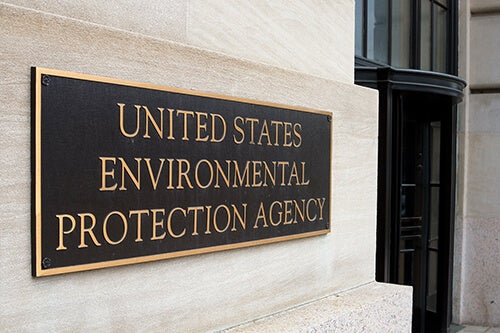The EU Restriction of Hazardous Substances (RoHS) Directive regulates the use of certain substances in electrical and electronic equipment (EEE). The directive is currently undergoing a major review, which could ultimately result in a recast. While few firm details are currently available, this revision will lead to important changes for RoHS compliance, including the possibility of RoHS 3 being an EU regulation, as opposed to a directive.
What Is RoHS?
The RoHS Directive focuses on limiting the use of certain hazardous substances — both for the protection of human health and the environment. Additionally, RoHS seeks to limit the impact of these substances and reduce occupational exposure.
To comply with RoHS, companies must control the use of these hazardous substances in the manufacture of any equipment that falls within scope. They also must keep technical documentation demonstrating compliance with the directive. This can be difficult for complex manufacturers due to their extensive supply chains.
Similarly, any EEE product containing the restricted substances above the maximum concentration limits at the homogeneous level (usually the smallest component or coating of a component) will be barred from the EU marketplace.
Why Is RoHS Undergoing Revision?
This is not the first time RoHS has undergone a revision. The directive originally came into force in July 2006 and was recast as RoHS 2 in January 2013, with an expansion of the original list of six restricted substances to 10 in July 2019.
In accordance with Article 24 of RoHS 2, a review is currently underway to assess how the directive has worked in practice and achieved its objectives. There is also a larger push within the EU for a greater focus on supply chain sustainability — removing substances from products that have lasting impacts on the environment and human health. Because of that, multiple laws are being reviewed and revised, including the Registration, Evaluation, Authorization, and Restriction of Chemicals (REACH) Regulation and the Classification, Labeling, and Packaging (CLP) Regulation.
How to Participate in the Public Consultation
A public consultation is currently being held, which will last until June 2, 2022. This consultation will allow stakeholders to submit their perspectives and views on potential changes to RoHS, including a streamlined process for introducing new substances and an examination of the list of excluded products. However, a complete repeal of the RoHS Directive has not been ruled out at this stage.
In order to participate in the public consultation, stakeholders should go to this site and complete the questionnaire.
The questionnaire includes questions pertaining to:
- The implications of the RoHS Directive potentially becoming a regulation
- Whether certain EEE, like radio-frequency identification (RFID) technology and photovoltaic panels should now be included in the scope of RoHS
- What a reasonable transition period would be for the inclusion of new restricted substances in Annex II.
Want to learn more about your RoHS requirements? Get up to speed with our RoHS Compliance Handbook.
Directive vs. Regulation
Since this revision may change RoHS from a directive to a regulation, it’s important to know the difference between them.
In the EU, a directive defines the results that must be achieved. However, each member state has to “transpose” the directive into national laws. In that way, member states have more freedom in how they approach the directive’s end goal.
A regulation, on the other hand, becomes law for every member state on the date it comes into force, without the need for national transposition.
Therefore, if RoHS 3 is to be a regulation, it would eliminate the scope or possibility of any differences between member states upon implementation.
RoHS 3
In 2015, an amending directive to RoHS 2 listed four additional chemicals (all phthalates) that were added to the restricted substances in 2019:
- Bis (2-Ethylhexyl) phthalate (DEHP)
- Benzyl butyl phthalate (BBP)
- Dibutyl phthalate (DBP)
- Diisobutyl phthalate (DIBP)
This update has often been — incorrectly — referred to by many as “RoHS 3,” but it still falls under RoHS 2 since it was not a recast of the directive and didn’t change the legislation following a comprehensive review.
What Happens After the Public Consultation?
The European Commission has said that, following the public consultation, it hopes to publish draft legislation in Q4 of 2022. Barring any delays, legislation could be passed as soon as 2023/2024, with an enforcement date following some time in 2025/2026.
How Assent Can Help
Manufacturers may find it difficult to keep track of changing legislation like RoHS. With Assent’s team of experts, you can maintain market access, address customer requests for data faster, and stay informed about all upcoming developments. In that way, Assent helps you work smarter and see deeper into your supply chain.
Take a look at Assent’s RoHS solution to learn more about the directive’s details and to get a deeper look into your legal obligations.









